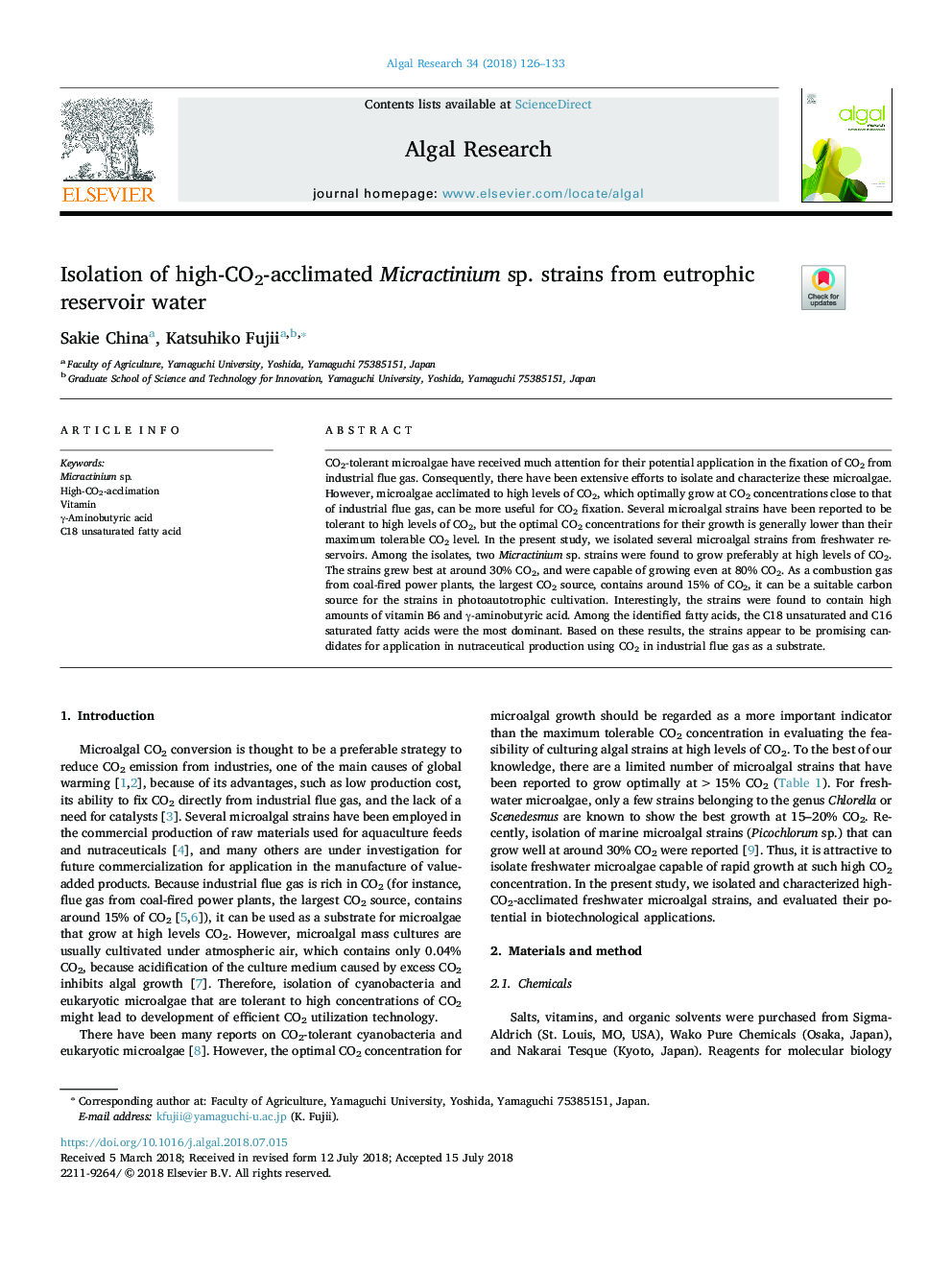| Article ID | Journal | Published Year | Pages | File Type |
|---|---|---|---|---|
| 8085655 | Algal Research | 2018 | 8 Pages |
Abstract
CO2-tolerant microalgae have received much attention for their potential application in the fixation of CO2 from industrial flue gas. Consequently, there have been extensive efforts to isolate and characterize these microalgae. However, microalgae acclimated to high levels of CO2, which optimally grow at CO2 concentrations close to that of industrial flue gas, can be more useful for CO2 fixation. Several microalgal strains have been reported to be tolerant to high levels of CO2, but the optimal CO2 concentrations for their growth is generally lower than their maximum tolerable CO2 level. In the present study, we isolated several microalgal strains from freshwater reservoirs. Among the isolates, two Micractinium sp. strains were found to grow preferably at high levels of CO2. The strains grew best at around 30% CO2, and were capable of growing even at 80% CO2. As a combustion gas from coal-fired power plants, the largest CO2 source, contains around 15% of CO2, it can be a suitable carbon source for the strains in photoautotrophic cultivation. Interestingly, the strains were found to contain high amounts of vitamin B6 and γ-aminobutyric acid. Among the identified fatty acids, the C18 unsaturated and C16 saturated fatty acids were the most dominant. Based on these results, the strains appear to be promising candidates for application in nutraceutical production using CO2 in industrial flue gas as a substrate.
Keywords
Related Topics
Physical Sciences and Engineering
Energy
Renewable Energy, Sustainability and the Environment
Authors
Sakie China, Katsuhiko Fujii,
